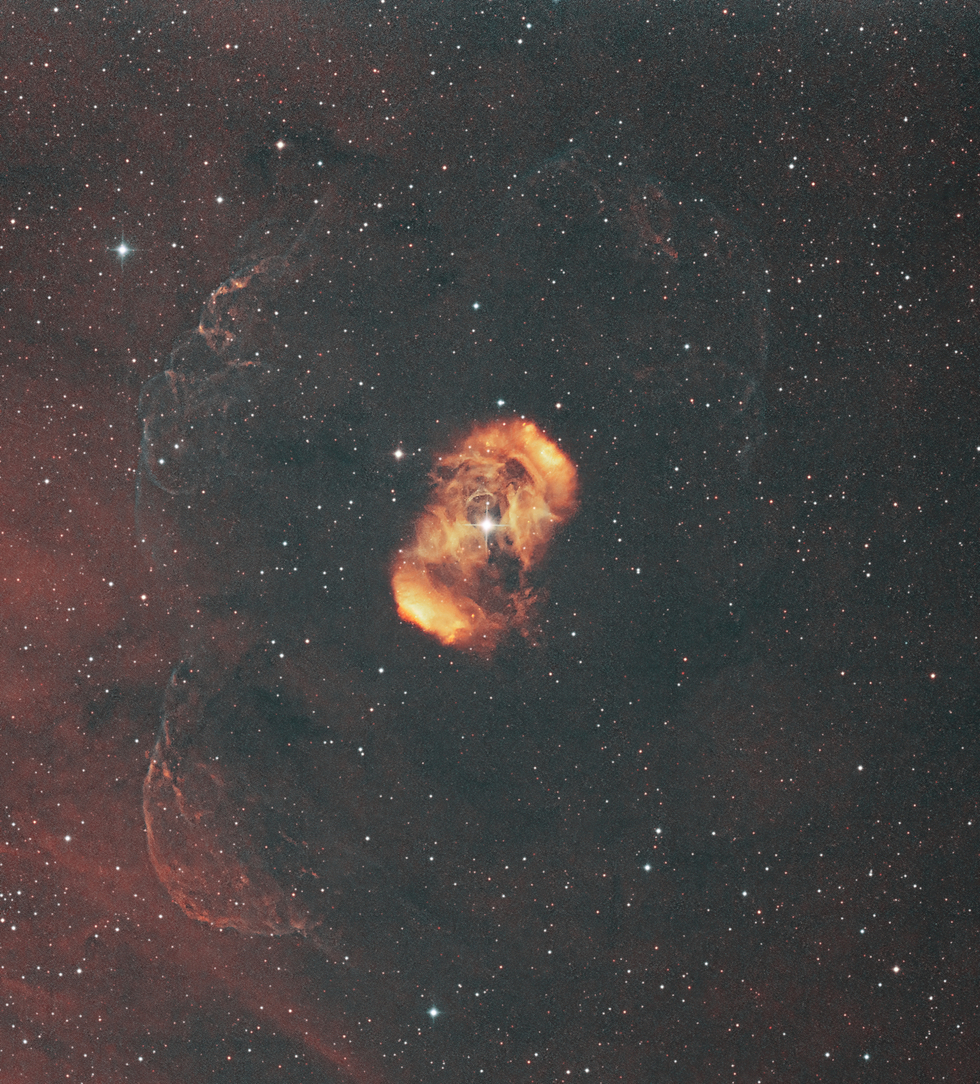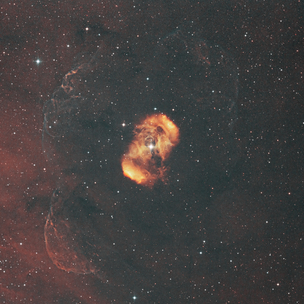HD 148937 & NGC 6165
0
5
HD 148937 & NGC 6165
HD 148937 is a blue star of spectral type O7, 40 times more massive than the Sun. With an age between 3 and 4 million years, it has crossed the equator of its life, since such massive stars generally live around 6 million years. It is very likely that it will end its life by exploding as a supernova.
HD 148937 is surrounded by the nebula NGC 6164-5 and, like many other O-type stars, it heats the surrounding gas clouds with ultraviolet radiation. This causes them to glow in visible light, illuminating cavities in the cloud that have been sculpted by the stellar wind itself. It has been suggested that the cloud of material has been ejected from the star as it spins on its axis, although it is possible that the magnetic fields surrounding the star play a significant role in the nebula's complex shape.
Massive stars like HD 148937 fuse hydrogen into helium in a process called the CNO cycle. As a byproduct, carbon and oxygen are converted to nitrogen, so a high nitrogen content on the stellar surface or in the ejected material indicates an evolved star. According to astronomer Nolan Walborn, HD 148937 is a member of a small group of O stars with peculiar spectral characteristics. The nebulosities ejected by HD 148937 - rich in nitrogen - suggest that it is an evolved star and point to a possible relationship with luminous blue variables.
HD 148937 is surrounded by the nebula NGC 6164-5 and, like many other O-type stars, it heats the surrounding gas clouds with ultraviolet radiation. This causes them to glow in visible light, illuminating cavities in the cloud that have been sculpted by the stellar wind itself. It has been suggested that the cloud of material has been ejected from the star as it spins on its axis, although it is possible that the magnetic fields surrounding the star play a significant role in the nebula's complex shape.
Massive stars like HD 148937 fuse hydrogen into helium in a process called the CNO cycle. As a byproduct, carbon and oxygen are converted to nitrogen, so a high nitrogen content on the stellar surface or in the ejected material indicates an evolved star. According to astronomer Nolan Walborn, HD 148937 is a member of a small group of O stars with peculiar spectral characteristics. The nebulosities ejected by HD 148937 - rich in nitrogen - suggest that it is an evolved star and point to a possible relationship with luminous blue variables.
SPECIFICATIONS
Telescope
Planewave CDK24
Camera
FLI PL 9000
Location
El Sauce Observatory, Chile
Date of observation
July 2021 - April 2022
Filters
Astrodon HSO
Processing
Processed in PixInsight and Photoshop





